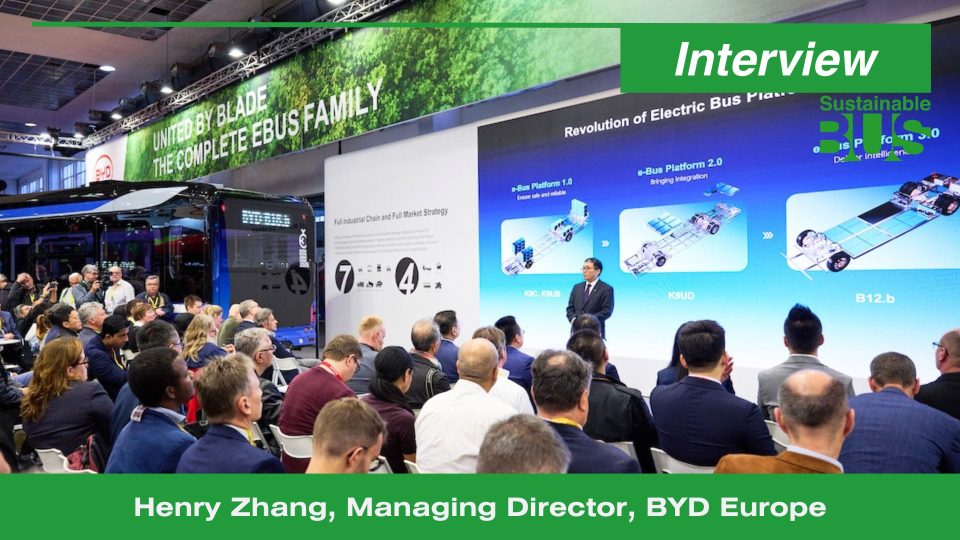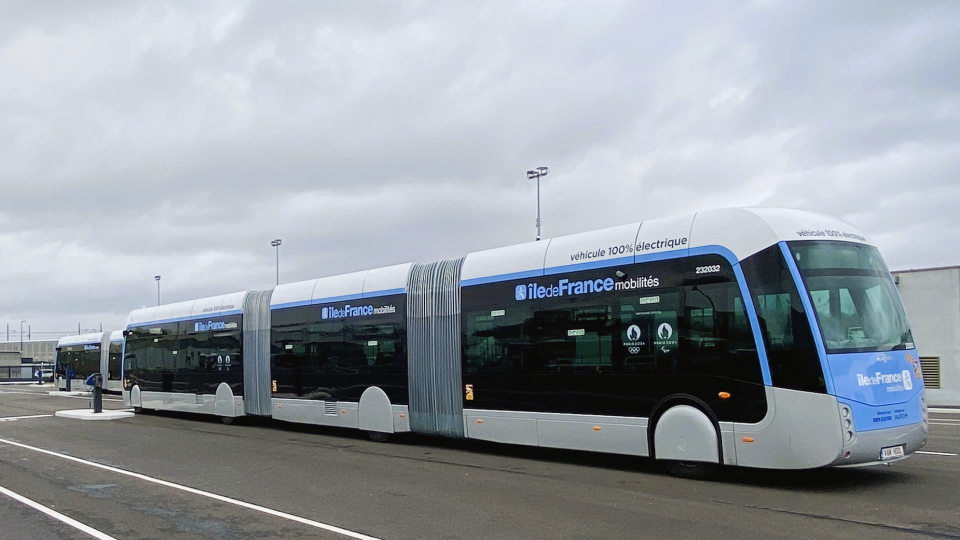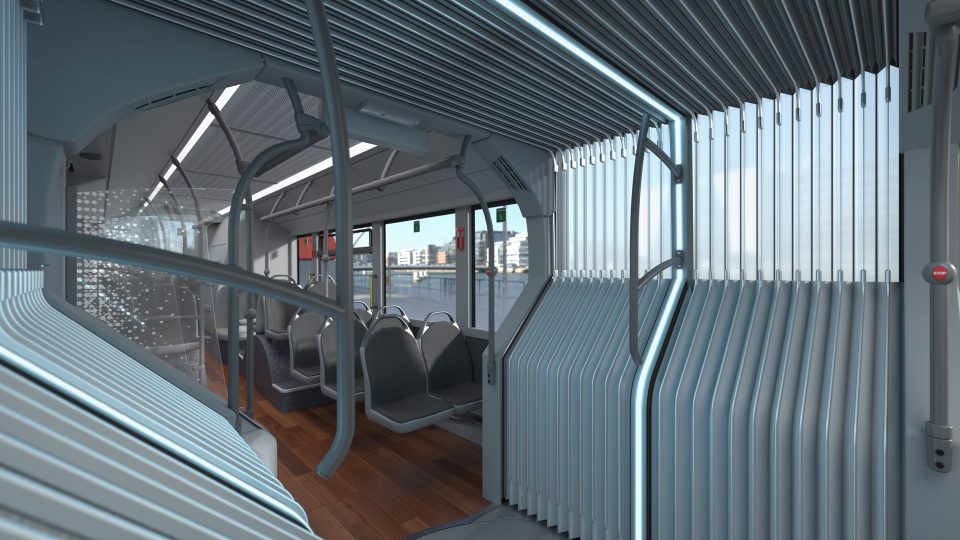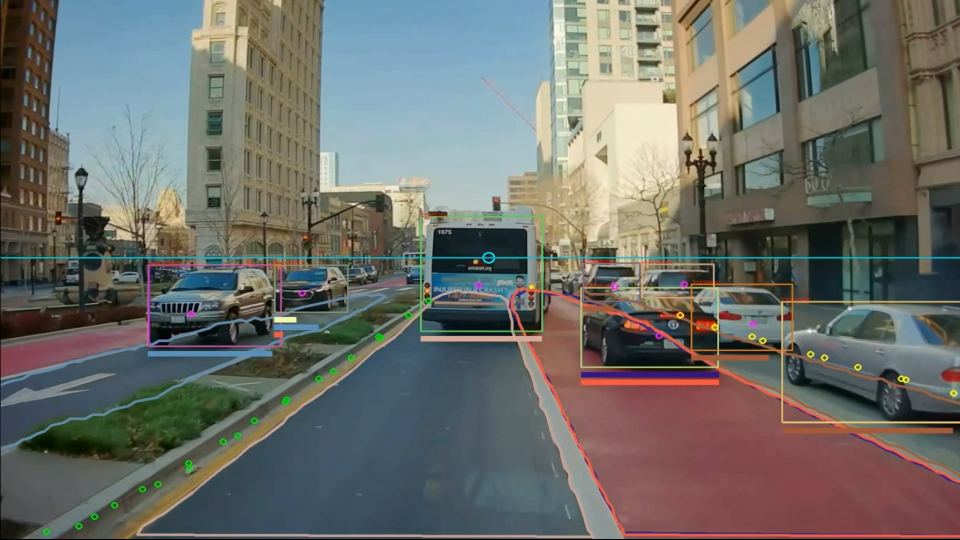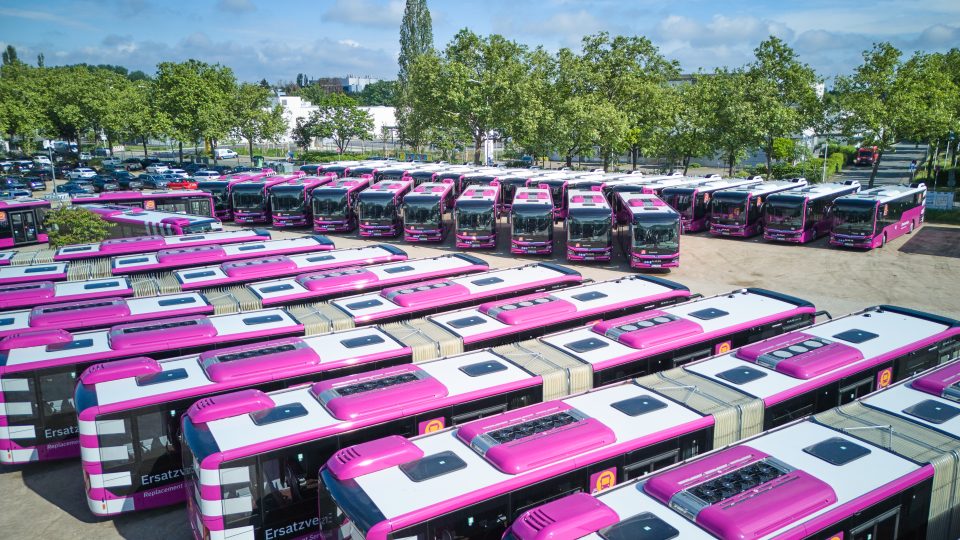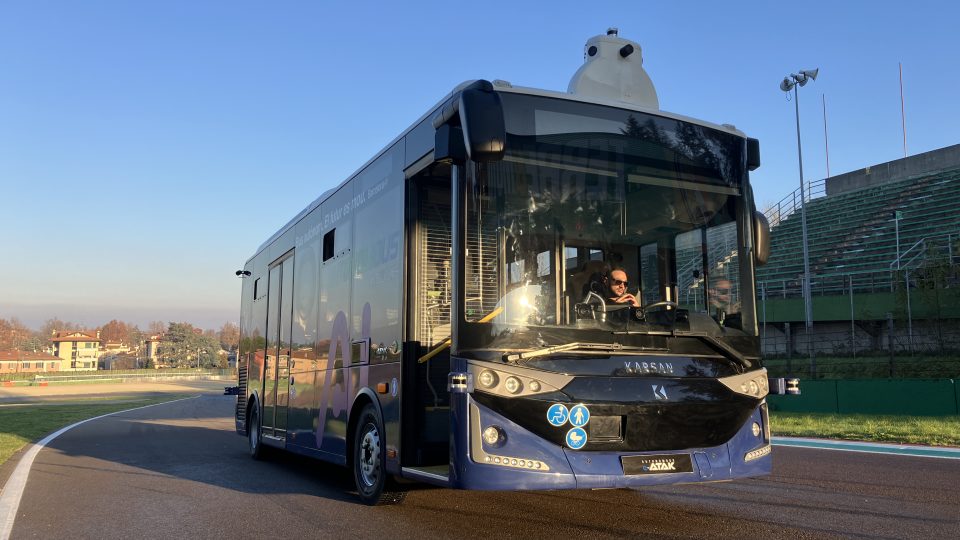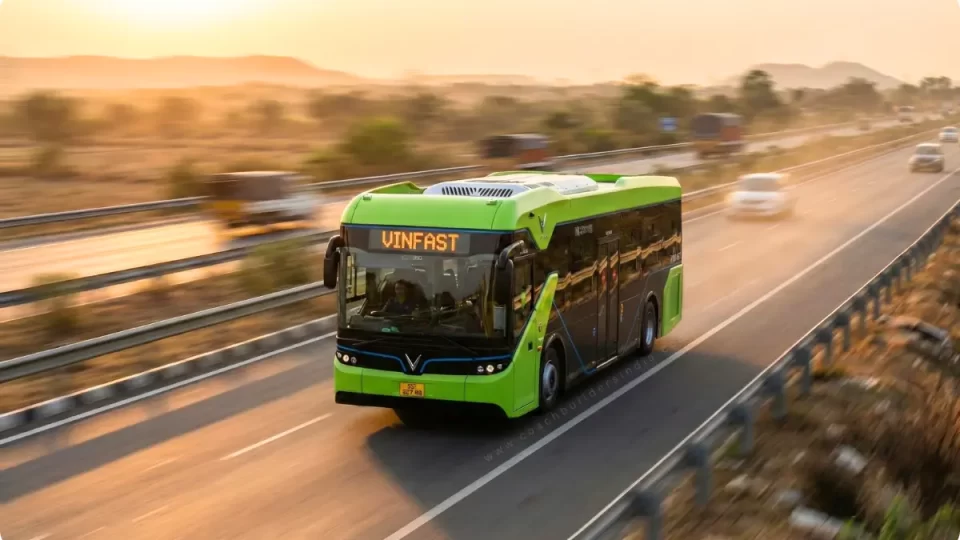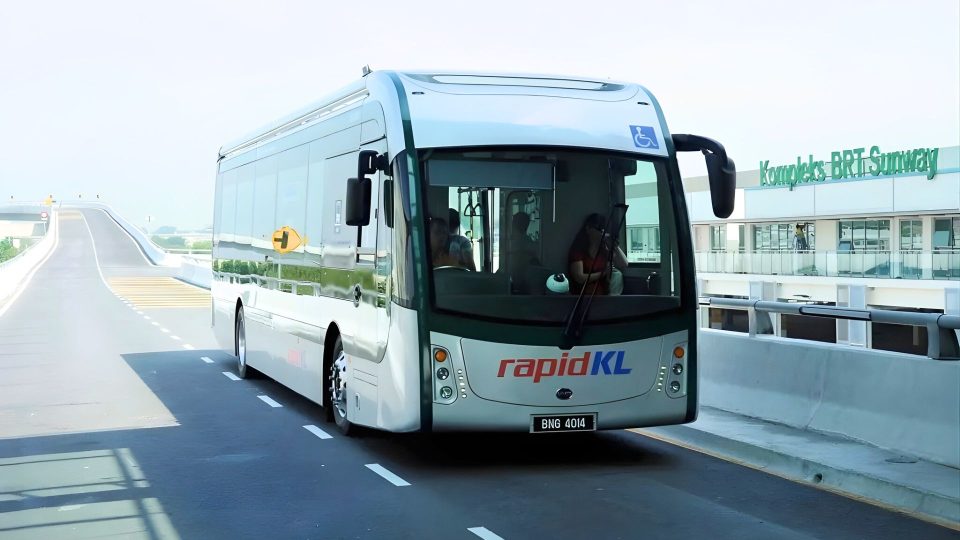Trends from Busworld 2025: electric coaches, key challenges, shifting manufacturing geographies
A few days after the close of Busworld Europe 2025, it’s time to look beyond the spotlights and the crowded stands. Trade fairs are mirrors of ambition as much as of reality, and Brussels offered both — innovation on stage, uncertainty behind the scenes. Here are a few reflections on what this year’s edition really […]
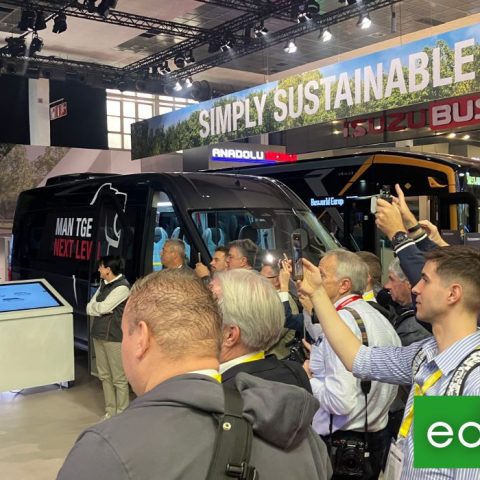
A few days after the close of Busworld Europe 2025, it’s time to look beyond the spotlights and the crowded stands. Trade fairs are mirrors of ambition as much as of reality, and Brussels offered both — innovation on stage, uncertainty behind the scenes. Here are a few reflections on what this year’s edition really revealed about the direction of the bus and coach industry.
First and foremost, something that can’t be stressed enough: as quickly anticipated above, trade fairs rarely reflect the reality of the market. At best, they foreshadow what is to come; at worst, they create illusions that dissolve as soon as the lights go off. Many buses have debuted at exhibitions without ever entering production. Yet it is equally true that zero-emission buses have dominated European fairs since before the pandemic, when electric vehicles still represented only a small fraction of total registrations. What once looked like an idealized projection has, within five years, become largely real. Will this be the case of electric intercity and coaches, that have been dominating this years’ edition?
The triumph of electric intercity buses and coaches
Yes, because the category generating the most product news at was undoubtedly the electric intercity and coach segments. This focus reflects both market interest and the early stages of decarbonization in long-distance transport. As Benedikt Nesselhauf, Head of the Brussels Office at MAN Truck & Bus representing ACEA, highlighted during the Zero Emission Bus Conference, “The bus segment has showed to policymakers that decarbonization is happening, thanks to a 21 percent share in new registrations as of the first half of 2025, the best performance in all vehicle segments.”
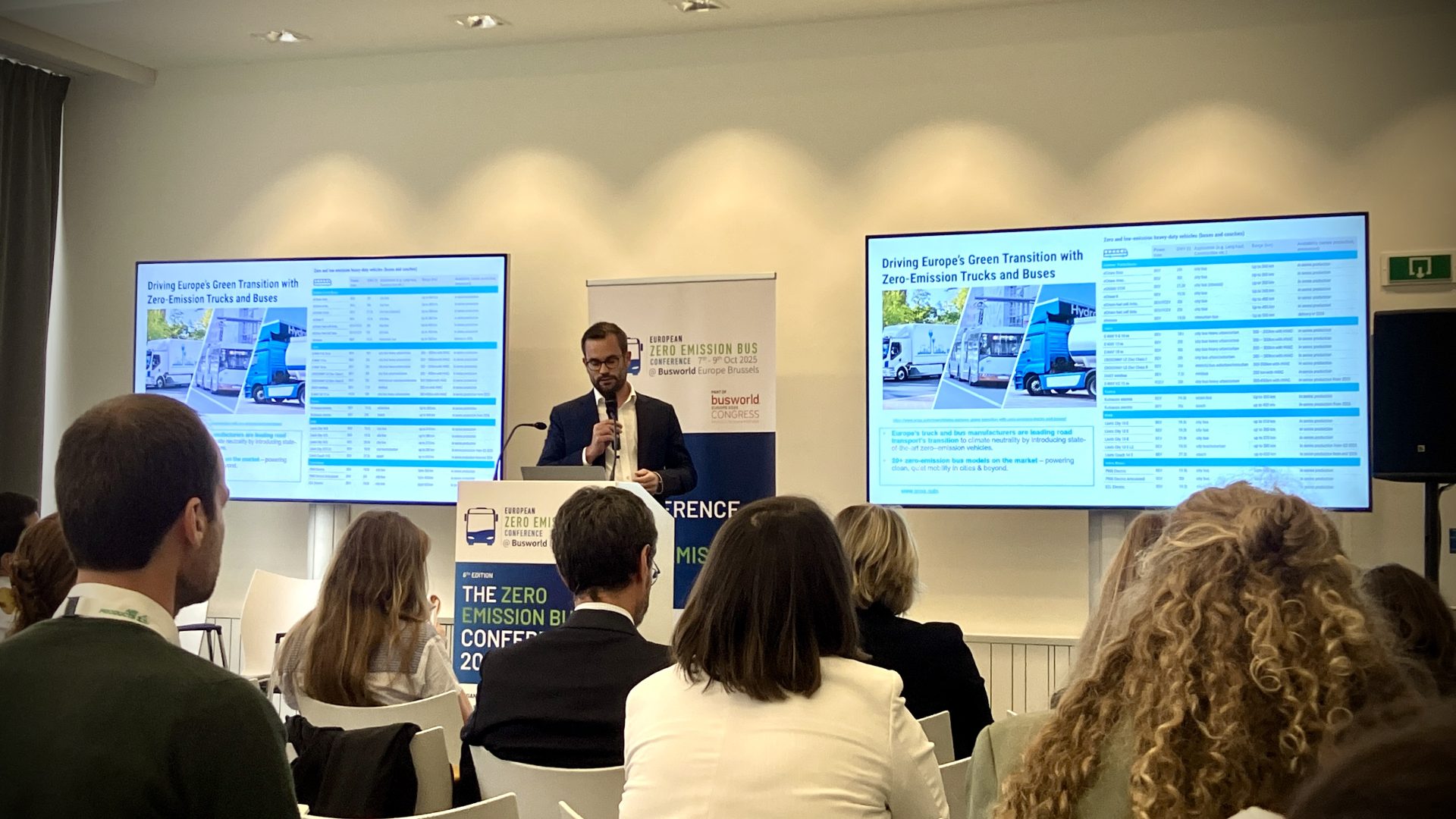
He further noted that according to ACEA figures, between 2025 and 2030, around 20,000 electric intercity buses and coaches are expected to enter the European market, in addition to 48,000 urban buses, implying a need for some 30,000 dedicated charging points for long-distance operations. He continued: “Based on current regulations, in order meet the 2030 CO2 target (-43%), we’ll need roughly one third of production in bus and truck sectors to be zero-emission, up from 3.5%. But today, there is no sufficient infrastructure and TCO is not yet balanced. We can make it — but European policymakers must create the enabling conditions, including a minimum requirement for European content in vehicles awarded through tenders”.
What will be tricky, indeed, is reducing CO2 emissions for intercity buses and coaches by 43 percent by 2030, although the system of exchanging carbon credit might help. Eamonn Mulholland from ICCT, also speaking at the Zero Emission Bus Conference, highlighted that “Most manufacturers are currently on track to earn credits under the bus standards, and many are already generating surplus credits by selling more zero-emission buses than required by EU targets. These credits can be applied in future compliance periods or transferred to intercity and coach operations to help meet the 2030 reduction target”.
Manufacturing geographies are changing fast
A historic overtaking in terms of exhibitor presence: at Busworld Europe 2025, there were more Chinese exhibitors than German ones. At Busworld Europe 2025, the leading country in terms of exhibitors is still Turkey, with 107 companies; second comes China, with 85; third is Germany, with 68. This means that China has overtaken Germany, as in 2023 the top three were 96 companies from Turkey, 79 from Germany, and 61 from China.
Let’s look at these figures in terms of shares. This year, Turkey accounted for 19 percent of exhibitors, China for 15 percent, and Germany for 12 percent. In 2023, the figures were 18 percent for Turkey, 15 for Germany, and 11.5 for China. It is reasonable to assume that in two years’ time the top three will look different again.
The equation is well known to industry insiders: one in every two buses circulating in Europe is produced in Turkey. Considering the solid performance of Karsan and Otokar — the former firmly anchored in significant market niches, the latter capable of supplying production volumes to two of the major “legacy manufacturers,” Iveco Bus and Daimler — the country continues to show signs of strong health (it’ll be the place where the first European e-coach will be produced, by MAN). However, if we look specifically at the subset of BEV buses, in 2024 around 30 percent of all registrations came from Chinese manufacturers, including BYD, although part of its production now takes place in Hungary. Same percentage applies to the first half of 2025.
Based on current regulations, in order meet the 2030 CO2 target (-43%), we’ll need roughly one third of production in bus and truck sectors to be zero-emission, up from 3.5%. But today, there is no sufficient infrastructure and TCO is not yet balanced. We can make it — but European policymakers must create the enabling conditions, including a minimum requirement for European content in vehicles awarded through tenders”
Benedikt Nesselhauf, Head of the Brussels Office at MAN Truck & Bus representing ACEA, highlighted during the Zero Emission Bus Conference 2025
The industrial geography of the sector, beyond just moving East, is actually widening. Volvo has opened production in Egypt through its partnership with MCV and, from 2026, will begin delivering coaches to Europe from Mexico, plus also offering in some countries coaches with body supplied by Marcopolo in Brazil.
India is also approaching. JBM has set up a European structure and is pushing to enter the market. Meanwhile, the announced takeover of Iveco Bus by Tata opens a new chapter that links a historical European brand to India’s industrial sphere. For now, no major changes are expected in the product lineup — the Crossway remains a strategic pillar — but the change of ownership naturally introduces some uncertainty, visible in a few management departures.
In the meantime, a Chinese group has acquired Safra, Ebusco’s production has moved entirely to China, and Vinfast’s arrival adds another piece to the puzzle: an ambitious group targeting price-sensitive tenders rather than service-based contracts.
Will Marcopolo shake up the coach market?
The return of Marcopolo to Europe could be a turning point for the coach market. After years of stagnation, this segment is recovering, but it still faces two structural bottlenecks: a chronic shortage of drivers and a lack of production capacity from established OEMs. Around one-fifth of the 2019 coach market was covered by brands that now have no product offering in that segment in 2025 (name are easy to acknowledge but let’s mention them: VDL, Volvo, Van Hool and, in part, Iveco Bus, whose Evadys is strong in some niches but limited in scope). If VDL Bus Group finally succeeds in bringing the delayed Futura 3 to market, and Marcopolo transfers its scale and build quality to Europe, the competitive picture could change rapidly.
A Chinese question
Given the prominence of Chinese players (and the tremendous quality in terms of product and technology of the two giants such as Yutong and BYD), the commercial rationale behind the efforts in the European market of a number of other companies (the list would be too long) remains unclear
With about forty thousand new buses and coaches registered per year, the European market is incredibly small (10 times small…) compared to China’s domestic scale. While profit margins per vehicle are of course higher, the costs of homologation, logistics, and service infrastructure are significant. The strategy may therefore be less about financial return and more about prestige: consolidating global presence, acquiring credibility, and building brand recognition.
Around one-fifth of the 2019 coach market was covered by brands that now have no product offering in that segment in 2025 (name are easy to acknowledge but let’s mention them: VDL, Volvo, Van Hool and, in part, Iveco Bus, whose Evadys is strong in some niches but limited in scope). If VDL Bus Group finally succeeds in bringing the delayed Futura 3 to market, and Marcopolo transfers its scale and build quality to Europe, the competitive picture could change rapidly
Technology, where are hydrogen and autonomous driving?
A technological consideration. Hydrogen and autonomous driving — where are you? Fuel cell buses could be counted on two hands, while as for autonomous driving, beyond the already mentioned Karsan and Otokar and the Polish startup Autonomous Systems… there was little or nothing. Strange, considering the ever-growing push for driverless solutions driven by lack of driving. But it is clear that, in the absence of a clear and advanced regulatory framework, demand for commercial solutions cannot develop.
On the hydrogen front, fuel prices are not falling, and the total cost of ownership compared with diesel remains a mirage, as it always has. Of course, innovations were not entirely absent, starting with Ballard, which presented a new generation of its market-leading module, and it is also worth noting the presence — for the first time at a bus fair — of the joint venture between Daimler and Volvo, Cellcentric. The focus is on heavy-duty applications. The demonstrated Setra is in action. It is surprising not to see hydrogen intercity projects. There, fuel cells would show their competitive advantage in terms of range and refueling times.
THE real global bus and coach expo
Busworld itself continues to grow in size and relevance. The Brussels edition has confirmed its position as the world’s leading bus exhibition, attracting delegations from Asia, Australia and Latin America. After years experimenting with multiple regional fairs, Busworld’s management now seems focused on strengthening its core events and discontinuing weaker ones. The European show, however, remains central — a unique meeting point for manufacturers, operators and policymakers.

